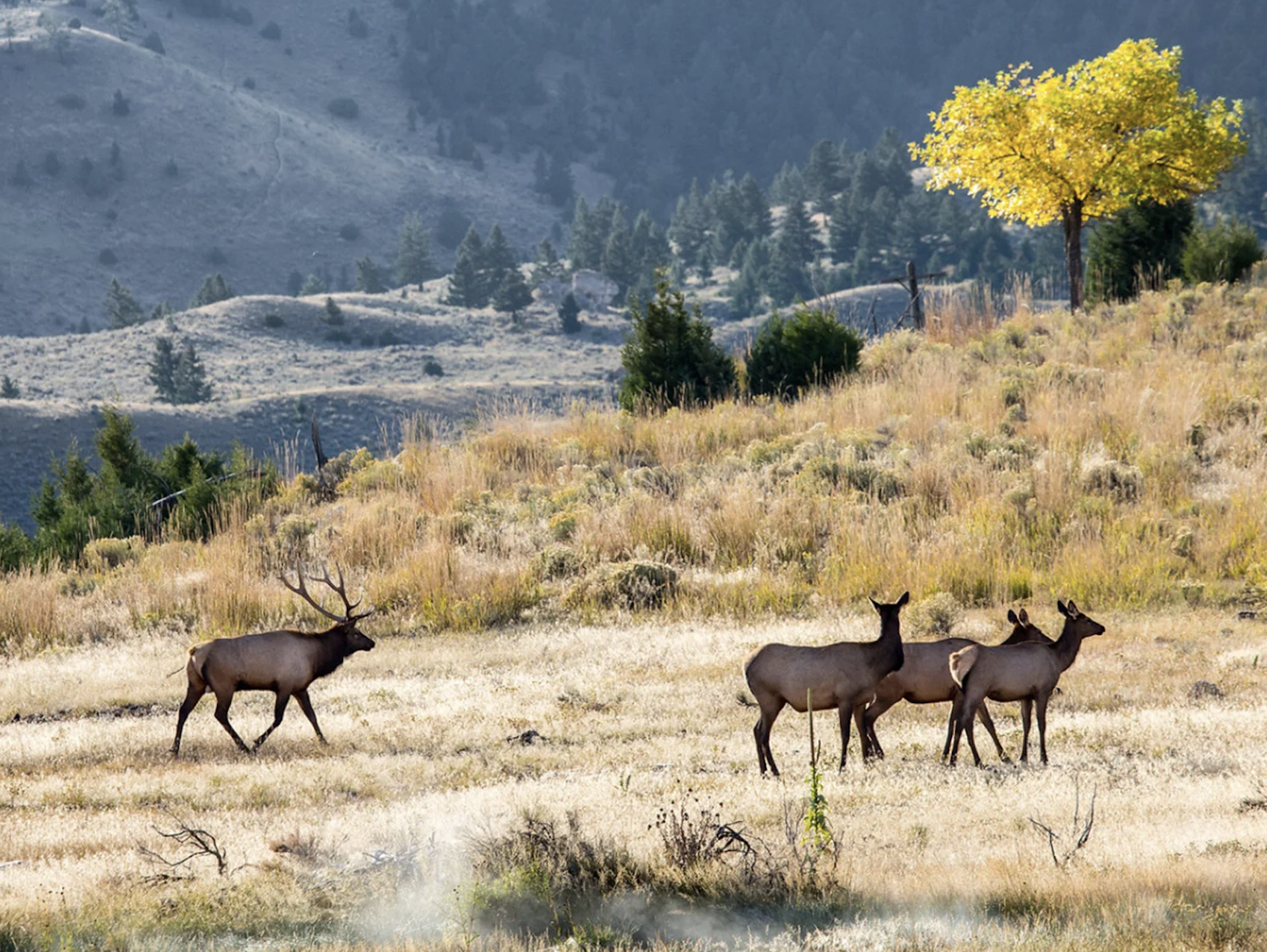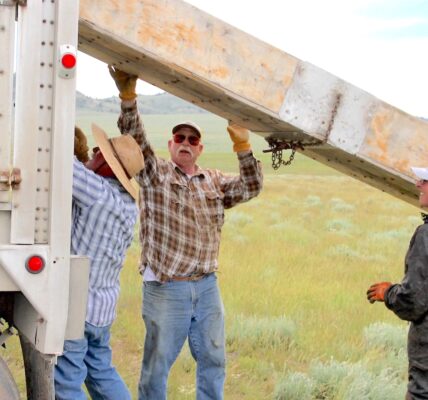
• A serious rural issue
By Carrie Haderlie
Wyoming Tribune Eagle
Via- Wyoming News Exchange
CHEYENNE — Last year, the Game and Fish Department removed more than 100 head of elk from rangeland in southeastern Wyoming, salvaged the meat and donated it to Wyoming first lady Jennie Gordon’s Wyoming Hunger Initiative.
This year, in an attempt to address overpopulated elk herds that damage rangelands through overgrazing, the Joint Agriculture Committee proposed a bill that would have compensated landowners for extraordinary damage to rangeland, provided those hunters allow reasonable hunting access on private lands, at 100% of the private land lease rate for the affected area.
House Bill 60, “Excess wildlife population damage amendments,” passed through committee and the House, but Senate Majority Leader Sen. Larry Hicks, R-Baggs, made the decision not to bring it to the Senate floor by deadline in the final week of the session.
“Even had it passed, from the beginning, what we wanted was not for ranchers to get paid for feeding elk. We wanted elk numbers to be managed,” Jim Magagna, executive vice president at Wyoming Stock Growers Association, told the Wyoming Tribune Eagle after the bill failed.
The idea behind HB 60 was two-fold: First, it would have offered financial assistance to landowners who suffer a significant economic impact from overgrazing until Game and Fish reduced elk numbers, Magagna said.
“And then also, frankly, it was to incentivize Game and Fish to be more aggressive. Because they haven’t been until this last year,” he said.
With the failure of the bill, landowners are left without recourse to manage for the next year.
“Unfortunately, in terms of any financial assistance for this year at least, (landowners) won’t have any,” Magagna said, adding that stakeholders may try a similar bill in the next session. Until then, it is even more important that Game and Fish be aggressive in elk management, he said. Game and Fish Director Brian Nesvik told the Wyoming Tribune Eagle that his agency is in the process of creating harvest strategies for herds that are over objective, using a combination of season structure adjustments and license issuance, as well as the Access Yes programs. Auxiliary management seasons and lethal take permits are being employed where appropriate, Nesvik said in an email statement.
“We will be wrapping up year one of our harvest strategy for the Iron Mountain Herd Unit and will evaluate our effectiveness using the liberal harvest tools we put in place,” Nesvik said. “We are committed to working closely with all stakeholders to ensure our harvest strategies will bring elk populations in line with commission approved objectives in a reasonable time-frame.”
Magagna agreed that Game and Fish does have tools for reduction and must use them. One, he said, allows for a landowner to receive 20 cow elk licenses on their land.
“The landowner can remove all 20 themselves, or they can give them to 20 friends and family,” he said. “They can’t make money off of them, but they can use those as a way to reduce the cow elk herd as long as the meat is salvaged.”
Magagna added he also hopes Game and Fish will use its regulatory authority to hire professionals to remove elk.
“They did that last year, and are doing it again this year. Last year, they removed 129 head of elk and salvaged the meat. It went into the Wyoming first lady’s food program,” Magagna said.
Elk, according to Nesvik, are a “highly valued public resource that rely on private lands for habitat.”
“The Department must work closely with both sportsmen and landowners to ensure elk are managed in such a way that private lands do not incur excessive damage,” he said, adding that hunters play an important role in managing elk populations through the harvest of cows.
“Where possible, we hope to utilize hunters to achieve sufficient harvest to reduce damage. However, where populations of elk are causing excessive damage, we will employ other tools, such as the issuance of lethal take permits, to reduce populations on private lands,” Nesvik said.
Josh Metten, Wyoming field manager for the Theodore Roosevelt Conservation Partnership, said that while elk overpopulation is a problem, HB 60 “was a problematic bill and it was not ready to become law.” Metten expressed concern with damage it could do to longstanding partnerships between Game and Fish, landowners and sportsmen, and the detrimental effect it could have had on Game and Fish coffers.
Instead, all involved must work together to address overpopulated elk herds and wildlife damages, he said.
“We are proud of the partnerships that we have in Wyoming to work with the Game and Fish, with private landowners and with sportsmen to address impacts from wildlife. We look forward to facilitating those relationships to identify a durable solution to this issue,” Metten said.
Landowners provide habitat, he continued.
“We need that in Wyoming. Private land has some of the best habitat in the state, and we need landowners to continue in that role,” Metten said. “We also recognize that we need to help them be viable, with respect to the impacts of big game on private land.”
With an anticipated expense of $1.6 million per year for three years, HB 60 proposed cutting into the budget of the Game and Fish Department to make landowner reimbursement payments, which Metten said would be the “opposite” of what is needed to address the issue.
And while landowners have no financial recourse for what Magagna says is a very real problem, the bill highlighted a very rural Wyoming problem in the state Capitol.
“The (Game and Fish Department) is very willing to use its strategies to address overpopulation now, but it is unfortunate that it had to get to this point,” Magagna said. “Even though the bill failed, one good thing I believe it did was it brought attention to the seriousness of the problem.”





